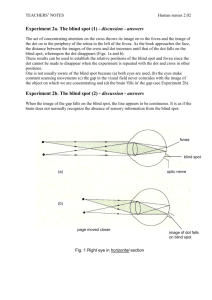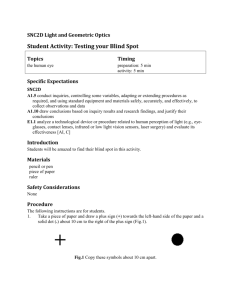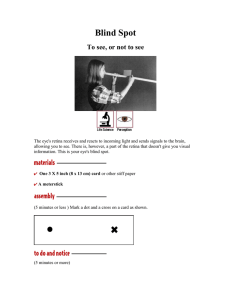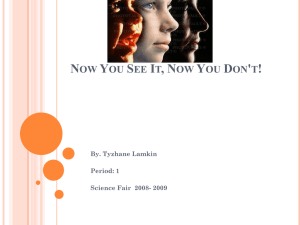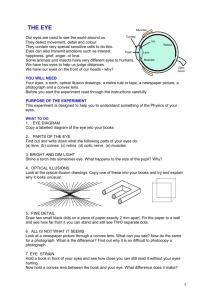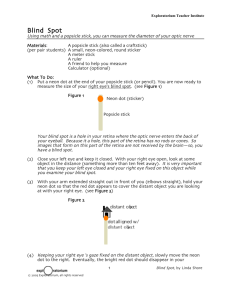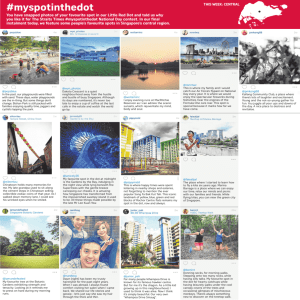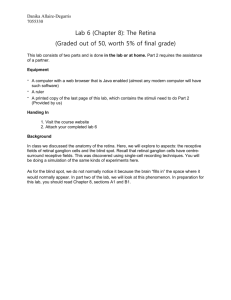Name: Period:____ Date
advertisement
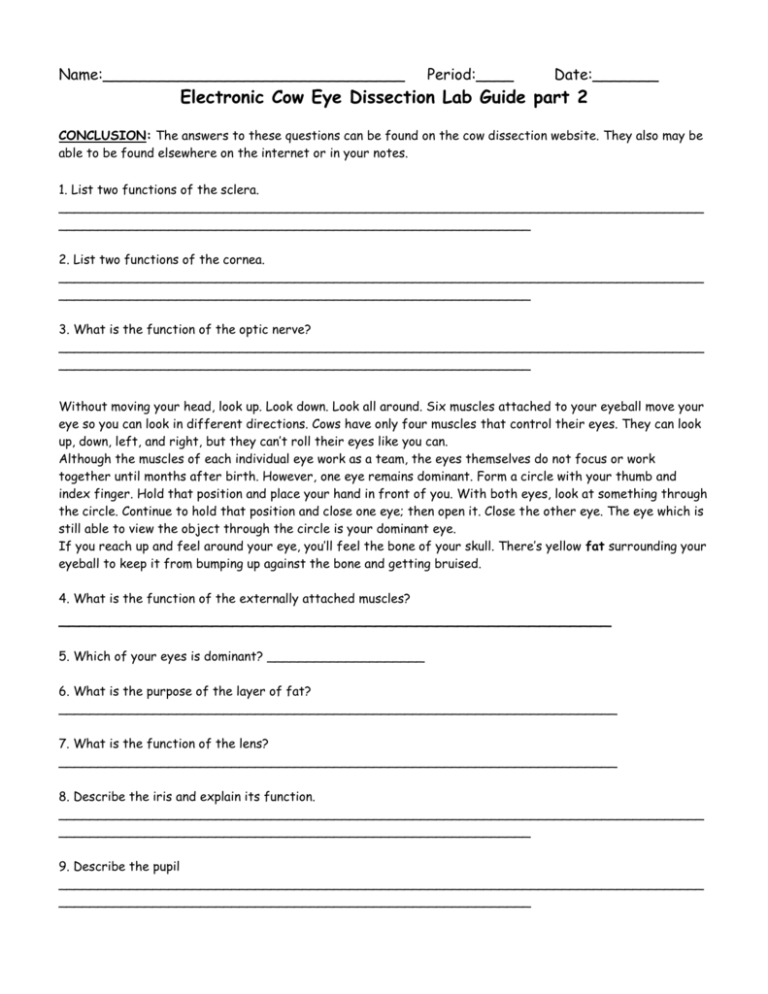
Name:________________________________ Period:____ Date:_______ Electronic Cow Eye Dissection Lab Guide part 2 CONCLUSION: The answers to these questions can be found on the cow dissection website. They also may be able to be found elsewhere on the internet or in your notes. 1. List two functions of the sclera. __________________________________________________________________________________ ____________________________________________________________ 2. List two functions of the cornea. __________________________________________________________________________________ ____________________________________________________________ 3. What is the function of the optic nerve? __________________________________________________________________________________ ____________________________________________________________ Without moving your head, look up. Look down. Look all around. Six muscles attached to your eyeball move your eye so you can look in different directions. Cows have only four muscles that control their eyes. They can look up, down, left, and right, but they can’t roll their eyes like you can. Although the muscles of each individual eye work as a team, the eyes themselves do not focus or work together until months after birth. However, one eye remains dominant. Form a circle with your thumb and index finger. Hold that position and place your hand in front of you. With both eyes, look at something through the circle. Continue to hold that position and close one eye; then open it. Close the other eye. The eye which is still able to view the object through the circle is your dominant eye. If you reach up and feel around your eye, you’ll feel the bone of your skull. There’s yellow fat surrounding your eyeball to keep it from bumping up against the bone and getting bruised. 4. What is the function of the externally attached muscles? ______________________________________________________ 5. Which of your eyes is dominant? ____________________ 6. What is the purpose of the layer of fat? _______________________________________________________________________ 7. What is the function of the lens? _______________________________________________________________________ 8. Describe the iris and explain its function. __________________________________________________________________________________ ____________________________________________________________ 9. Describe the pupil __________________________________________________________________________________ ____________________________________________________________ The spot where the retina is attached to the back of the eye is called the blind spot. Because there are no light-sensitive cells (photoreceptors) at that spot, you can’t see anything that lands in that place on the retina. Under the retina, the back of the eye is covered with shiny, blue-green stuff. This is the tapetum. It reflects light from the back of the eye. Have you ever seen a cat’s eyes shining in the headlights of a car? Cats, like cows, have a tapetum. A cat’s eye seems to glow because the cat’s tapetum is reflecting light. If you shine a light at a cow at night, the cow’s eyes will shine with a blue-green light because the light reflects from the tapetum. Humans do not have this tapetum. Find your blind spot. To find your blind spot, use the two dots below. Hold one hand over your left eye and look directly at the lefthand dot. At first, you can see both dots even though you're looking directly at only one. As you slowly move the page closer to your eyes, the right-hand dot disappears! If you move your eye, the dot will reappear, but as long as you focus on the first dot, the second will be invisible. Move even closer and the missing dot reappears. You’ve found your blind spot!

